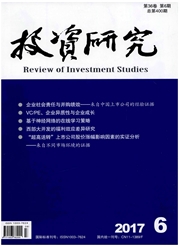

 中文摘要:
中文摘要:
本文基于中国家庭金融调查(CHFS)数据,研究了信贷约束对家庭资产选择的影响。我们将风险资产从狭义到广义分为四个层次,同时从正规信贷供给和需求两个方面来考察信贷约束,并用Probit模型估计出家庭受信贷约束的概率,以此来度量信贷约束。为了克服信贷约束的内生性,本文选取社区到市中心的距离作为工具变量,用极大似然估计方法进行两阶段估计,发现信贷约束会阻碍家庭风险资产参与,并降低家庭将财富配置于风险资产的比例。因此,信贷约束是阻碍家庭持有风险资产的重要因素。
 英文摘要:
英文摘要:
Based on China Household Finance Survey (CHFS) data, this paper studies the impact of credit constraints from ~or- real credit supply and demand on household portfolio choice. We use four levels of risky asset from narrow definition to broad definition to measure household risky asset. We use the probability of household credit constrained, which is predicted from probit model, to measure household credit constraints. In order to cope with the endogeneity of credit constraints, we use the distance from household to downtown as the instrumental variable, and estimate probit and tobit model by two-stage methods. The paper finds credit constraints prevent household from participating in financial market, and reduce the ratio of risky asset to household wealth.
 同期刊论文项目
同期刊论文项目
 同项目期刊论文
同项目期刊论文
 期刊信息
期刊信息
